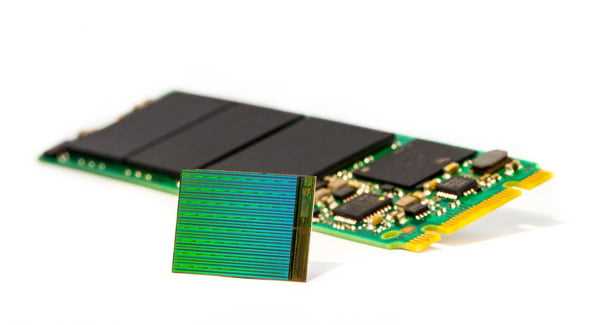NAND flash memory, the nonvolatile solid-state (SSD) storage medium that profoundly changed the technology industry in a generation of use, celebrates its 35th anniversary this year. It has long been considered a strategic IT component. And no one could have imagined that in its early days, in the 1980s.
What do cassette recorders from the 1980s, MP3 players from the 1990s and today’s smartphones have in common? None would exist today without NAND flash memory, the influence of which has quietly improved the quality of consumer computing lives for many years.
San Jose, California-based Kioxia America, Inc., known as Toshiba Memory America until October 2019, announced that it is celebrating the anniversary of the invention of NAND flash memory by Dr. Fujio Masuoka, scientist at Toshiba in 1980.
Where did the name “flash” come from?
Kioxia claims that the name “flash” was suggested by Masuoka’s colleague, Shoji Ariizumi, because the process of erasing the contents of memory reminded him of a camera flash. Toshiba released NAND flash in 1987; since then, the SSD storage medium has taken off.
Most people are unaware that one of the earliest use cases for NAND flash technology was in the cassette tape recorders and telephone answering machines of the 1980s and 1990s. they slipped small 8MB or 16MB storage cards into their cameras and phones or when they plugged a USB drive into a PC. Use cases still being used thousands of times a day.
“The invention of NAND flash sparked a revolution that digitized the human experience,” said Tom Coughlin, longtime NAND flash and storage analyst, Coughlin Associates.
“NAND flash touches nearly every aspect of our lives,” said IDC analyst Jeff Janukowicz.
“It’s just everywhere! Who could have imagined that this technology would have become so ubiquitous in just 35 years?” said Jim Handy of Objective Analysis.
In 1987, it would have been hard to imagine all the ways this new technology would impact the world. NAND flash memory made devices much more mobile and replaced outdated technologies and products that had been in use for years. Since entering the market 35 years ago, the annual NAND flash memory market has grown to over $70 billion (Forward Insights, 3Q 2021).
The support itself has been significantly improved
The quality of the support itself has improved considerably. In terms of die density, flash memory increased from 4MB to 1.33TB, a 333,000 times increase (Forward Insights, 2019). To put this exponential growth into perspective, in the 1990s the highest density flash memory available could hold 1/8 of a photo. As of 2022, the largest array density available is 1.33 TB and can store 39,000 photos.
Early detractors of NAND flash storage—proponents of mechanical disk drives, still in use around the world—predicted that solid media would wear out over time and become inefficient. Well, NAND flash technology has, in fact, stood the test of time and hasn’t received those criticisms anymore.
Some of the earliest applications that flash made possible, including digital cameras, barcode scanners, and personal digital assistants (PDAs), have evolved with the technology to the point of being almost unrecognizable today. In addition, new applications have emerged, many of which would simply not exist without the advancements made by Kioxia. These include smartphones, tablets and laptops, automotive infotainment systems, games, wearables and many other use cases.
Differences between NAND and NOR flash memory
For the record, there are two types of flash storage: NAND and NOR. High-density NAND (which stands for “Not AND”, a Boolean logic operation that is true if only one input is false) also needs to be programmed and read in smaller blocks or pages. NOR technology allows a single byte to be written or read independently. NOR flash memory is preferred for flash devices used to store and execute code, usually in small capacities.
Moreover, for the record, Kioxia is not the only NAND flash manufacturer. Samsung (the global market leader), WDC, SK Hynix, Micron and Intel are the major players.
Source: “ZDNet.com”
